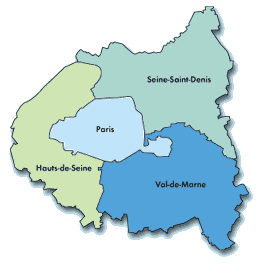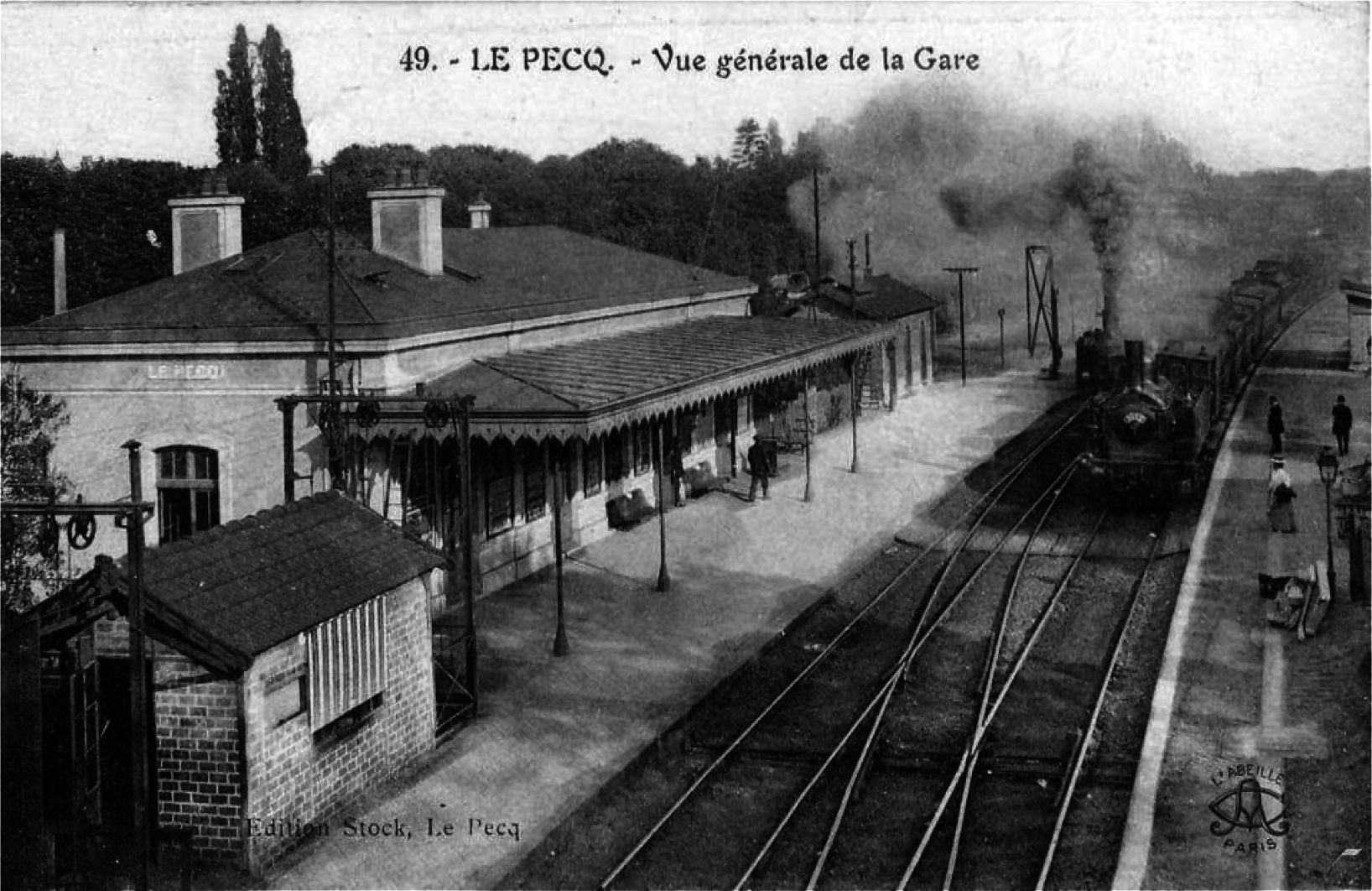|
Saint-Cloud Station
Saint-Cloud is a station in the commune of Saint-Cloud (department of Hauts-de-Seine). It is in the Île-de-France region of France and is part of the Transilien rail network. The station The station is on line L and U trains of the Transilien Paris–Saint Lazare network. It is at the junction of the Saint-Nom-la-Bretèche and Versailles–Rive Droite branches. Up until 1930, there was a branch about 160 m long providing service to the Château de Saint-Cloud The Château de Saint-Cloud was a château in France, built on a site overlooking the Seine at Saint-Cloud in Hauts-de-Seine, about west of Paris. On the site of the former palace is the state-owned Parc de Saint-Cloud. The château was expand .... References External links * Railway stations in Hauts-de-Seine Railway stations in France opened in 1839 {{IledeFrance-railstation-stub ... [...More Info...] [...Related Items...] OR: [Wikipedia] [Google] [Baidu] |
Société Nationale Des Chemins De Fer Français
The Société nationale des chemins de fer français (; abbreviated as SNCF ; French for "National society of French railroads") is France's national state-owned railway company. Founded in 1938, it operates the country's national rail traffic along with Monaco, including the TGV, on France's high-speed rail network. Its functions include operation of railway services for passengers and freight (through its subsidiaries SNCF Voyageurs and Rail Logistics Europe), as well as maintenance and signalling of rail infrastructure (SNCF Réseau). The railway network consists of about of route, of which are high-speed lines and electrified. About 14,000 trains are operated daily. In 2010 the SNCF was ranked 22nd in France and 214th globally on the Fortune Global 500 list. It is the main business of the SNCF Group, which in 2020 had €30 billion of sales in 120 countries. The SNCF Group employs more than 275,000 employees in France and around the world. Since July 2013, the SNCF Group ... [...More Info...] [...Related Items...] OR: [Wikipedia] [Google] [Baidu] |
Communes Of France
The () is a level of administrative division in the French Republic. French are analogous to civil townships and incorporated municipalities in the United States and Canada, ' in Germany, ' in Italy, or ' in Spain. The United Kingdom's equivalent are civil parishes, although some areas, particularly urban areas, are unparished. are based on historical geographic communities or villages and are vested with significant powers to manage the populations and land of the geographic area covered. The are the fourth-level administrative divisions of France. vary widely in size and area, from large sprawling cities with millions of inhabitants like Paris, to small hamlets with only a handful of inhabitants. typically are based on pre-existing villages and facilitate local governance. All have names, but not all named geographic areas or groups of people residing together are ( or ), the difference residing in the lack of administrative powers. Except for the municipal arrondi ... [...More Info...] [...Related Items...] OR: [Wikipedia] [Google] [Baidu] |
Saint-Cloud
Saint-Cloud () is a commune in the western suburbs of Paris, France, from the centre of Paris. Like other communes of Hauts-de-Seine such as Marnes-la-Coquette, Neuilly-sur-Seine and Vaucresson, Saint-Cloud is one of France's wealthiest towns, with the second-highest average household income of communities with 10,000 to 50,000 households. In 2019, it had a population of 30,012. History The town is named after Clodoald, grandson of Clovis, who is supposed to have sought refuge in a hamlet on the Seine near Paris, then named Novigentum, like many other newly founded mercantile settlements outside the traditional towns. After he was canonized, the village where his tomb was located took the name of Sanctus Clodoaldus. A park contains the ruins of the Château de Saint-Cloud, built in 1572 and destroyed by fire in 1870 during the Franco-Prussian War. The château was the residence of several French rulers and served as the main country residence of the cadet Orléans line u ... [...More Info...] [...Related Items...] OR: [Wikipedia] [Google] [Baidu] |
Departments Of France
In the administrative divisions of France, the department (french: département, ) is one of the three levels of government under the national level ("territorial collectivities"), between the administrative regions and the communes. Ninety-six departments are in metropolitan France, and five are overseas departments, which are also classified as overseas regions. Departments are further subdivided into 332 arrondissements, and these are divided into cantons. The last two levels of government have no autonomy; they are the basis of local organisation of police, fire departments and, sometimes, administration of elections. Each department is administered by an elected body called a departmental council ( ing. lur.. From 1800 to April 2015, these were called general councils ( ing. lur.. Each council has a president. Their main areas of responsibility include the management of a number of social and welfare allowances, of junior high school () buildings and technical staff, ... [...More Info...] [...Related Items...] OR: [Wikipedia] [Google] [Baidu] |
Hauts-de-Seine
Hauts-de-Seine (; ) is a Departments of France, département in the Île-de-France Regions of France, region, Northern France. It covers Paris's western inner Banlieue, suburbs. It is bordered by Paris, Seine-Saint-Denis and Val-de-Marne to the east, Val-d'Oise to the north, Yvelines to the west and Essonne to the south. With a population of 1,624,357 (as of 2019)Populations légales 2019: 92 Hauts-de-Seine INSEE and a total area of 176 square kilometres (68 square miles), it is the second most List of French departments by population, highly densely populated department of France after Paris. It is the List of French departments by population, fifth most populous department in France. Its Prefectures in France, prefecture is Nanterre although Boulogne-Billancourt, one of its two Subprefec ... [...More Info...] [...Related Items...] OR: [Wikipedia] [Google] [Baidu] |
Île-de-France
, timezone1 = CET , utc_offset1 = +01:00 , timezone1_DST = CEST , utc_offset1_DST = +02:00 , blank_name_sec1 = Gross regional product , blank_info_sec1 = Ranked 1st , blank1_name_sec1 = –Total , blank1_info_sec1 = €742 billion (2019) , blank2_name_sec1 = –Per capita , blank2_info_sec1 = €59,400 (2018) , blank_name_sec2 = NUTS Region , blank_info_sec2 = FR1 , website = , iso_code = FR-IDF , footnotes = The Île-de-France (, ; literally "Isle of France") is the most populous of the eighteen regions of France. Centred on the capital Paris, it is located in the north-central part of the country and often called the ''Région parisienne'' (; en, Paris Region). Île-de-France is densely populated and retains a prime economic position on the national stage: though it covers only , abo ... [...More Info...] [...Related Items...] OR: [Wikipedia] [Google] [Baidu] |
Transilien
Transilien () is the brand name given to the commuter rail network serving Île-de-France, the region surrounding and including the city of Paris. The network consists of eight lines: Transilien Line H, H, Transilien Line J, J, Transilien Line K, K, Transilien Line L, L, Transilien Line N, N, Transilien Line U, U, Transilien Line P, P and Transilien Line R, R, each operated by SNCF, the state-owned railway of France. The lines begin and end in major Parisian stations, but unlike the Réseau Express Régional, RER network, the Transilien trains do not cross through the Paris city centre. The Transilien brand was established on 20 September 1999 as a way to unify the suburban network that existed since the late nineteenth century. The name "Transilien" is a derivative of ''Francilien'', the demonym for people living in Île-de-France. As part of the rebranding effort, stations and rolling stock were modernized. The area covered does not correspond exactly with the boundaries of t ... [...More Info...] [...Related Items...] OR: [Wikipedia] [Google] [Baidu] |
Château De Saint-Cloud
The Château de Saint-Cloud was a château in France, built on a site overlooking the Seine at Saint-Cloud in Hauts-de-Seine, about west of Paris. On the site of the former palace is the state-owned Parc de Saint-Cloud. The château was expanded by Phillipe of France, Duke of Orléans in the 17th century, and by Marie Antoinette in the 1780s. After occupation by Napoleon I and Napoleon III, it was destroyed in 1870 during the Franco-Prussian War. History Hôtel d'Aulnay The Hôtel d'Aulnay on the site was expanded into a château in the 16th century by the Gondi banking family. The Gondis stemmed from a family of Florentine bankers established at Lyon in the first years of the 16th century, who had arrived at the court of France in 1543 in the train of Catherine de' Medici. In the 1570s, the Queen offered Jérôme de Gondi a dwelling at Saint-Cloud, the ''Hôtel d'Aulnay'', which became the nucleus of the château with a right-angled wing that looked out on a terrace. ... [...More Info...] [...Related Items...] OR: [Wikipedia] [Google] [Baidu] |
Railway Stations In Hauts-de-Seine
Rail transport (also known as train transport) is a means of transport that transfers passengers and goods on wheeled vehicles running on rails, which are incorporated in tracks. In contrast to road transport, where the vehicles run on a prepared flat surface, rail vehicles (rolling stock) are directionally guided by the tracks on which they run. Tracks usually consist of steel rails, installed on sleepers (ties) set in ballast, on which the rolling stock, usually fitted with metal wheels, moves. Other variations are also possible, such as "slab track", in which the rails are fastened to a concrete foundation resting on a prepared subsurface. Rolling stock in a rail transport system generally encounters lower frictional resistance than rubber-tyred road vehicles, so passenger and freight cars (carriages and wagons) can be coupled into longer trains. The operation is carried out by a railway company, providing transport between train stations or freight customer facil ... [...More Info...] [...Related Items...] OR: [Wikipedia] [Google] [Baidu] |




